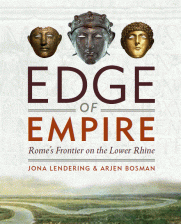It is of course a great image in the cinema: the actor playing Columbus (1451-1506) is looking at the horizon and sees how a ship disappears – first the hull, then the masts. He looks at the orange or apple he happens to be eating, and you can see how he is thinking and realizes that we live on a spherical earth.
Great cinema, indeed, but unhistorical. The people of the fifteenth century were not that stupid. The Italian poet Dante (1365-1321) already assumed that the earth is a globe: people descending into hell eventually leave the netherworld on the other side of the planet. Seventeen centuries before Dante, Aristotle (384-322) already knew that the earth is a sphere.
So how come that so many people, not only in Hollywood, “know” that the ancients believed that the earth was flat? It’s all based on a misunderstanding of a remark by the Andalusian bishop Isidore of Seville (560-636). In his Etymologies, he says that the earth’s orb has this name because it is as round as a wheel (Orbis a rotunditate circuli dictus, quia sicut rota est; 14.2). Careless reading indeed gives the impression that the venerable writer believed the earth was wheel-shaped, but we know that Isidore in fact knew better (e.g., Etymologies 9.2.133).
It may be added the many ancient maps also give the impression that the makers believed that the world was flat, but the maps of Hecataeus and Agrippa are not a real argument: our own maps are also two-dimensional representations of a three-dimensional world. Herodotus of Halicarnassus may have been the latest author to believe that the world was flat.

 Subscribe to feed
Subscribe to feed
John the Lydian describes it as a cube.